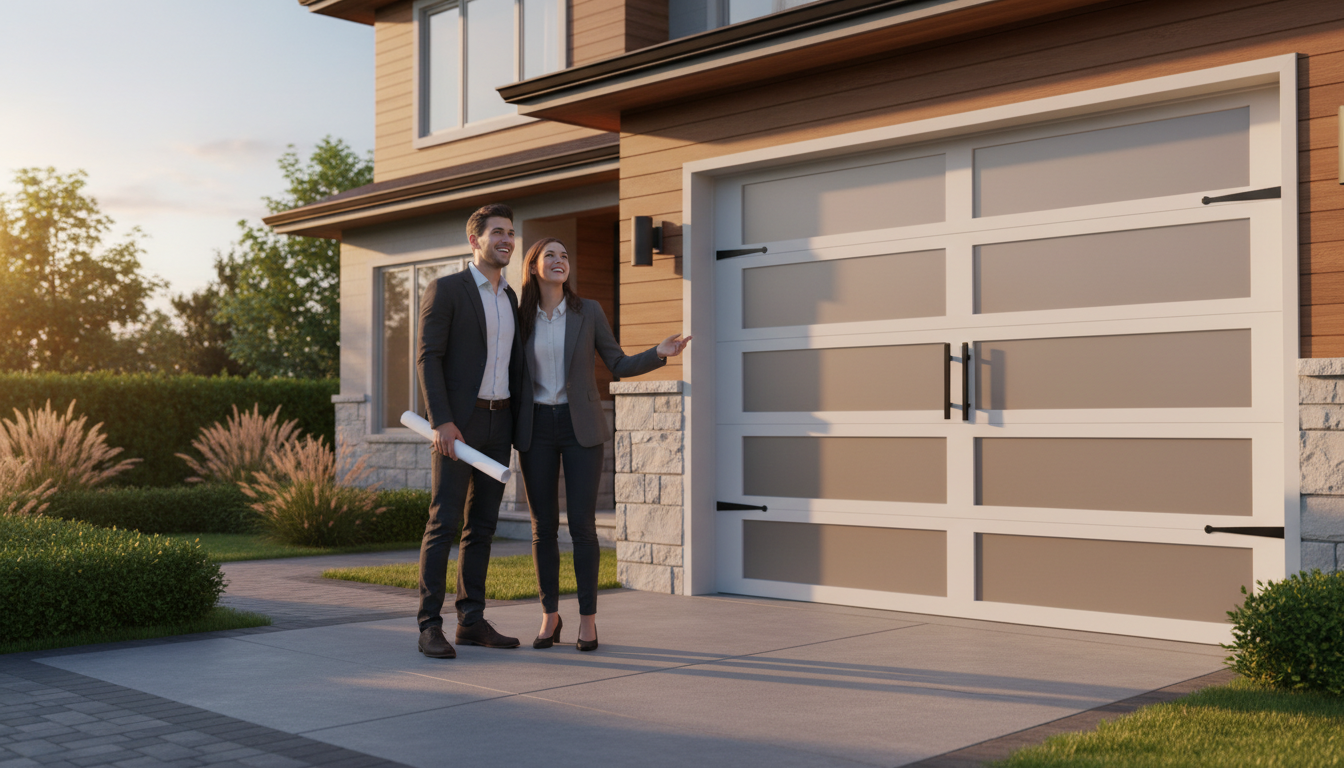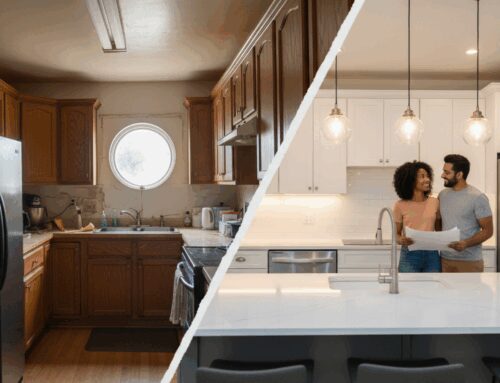Your garage door occupies nearly one-third of your home’s street-facing facade, making it one of the most impactful home improvement projects you can undertake. Beyond mere aesthetics, a well-chosen garage door enhances security, boosts energy efficiency, and significantly increases property value—often delivering a remarkable return on investment that few other upgrades can match. Whether you’re planning a full replacement or seeking smart upgrades to your existing system, understanding your options transforms this functional element into a powerful statement about your home’s character and your attention to detail.
Why Garage Door Improvements Deliver Exceptional Value
When homeowners consider renovation projects, garage doors frequently get overlooked in favor of kitchen remodels or bathroom upgrades. Yet according to multiple annual cost-versus-value reports, garage door replacements consistently rank among the top home improvements for return on investment. The reason is simple: this single upgrade simultaneously addresses curb appeal, security, and functionality in one focused project. Modern garage doors incorporate advanced materials and insulation technologies that can reduce energy costs, while contemporary designs can completely transform your home’s exterior appearance.
The Financial Benefits of Garage Door Upgrades
A new garage door typically recoups over 90% of its cost in added home value, making it one of the smartest investments in residential property. Beyond resale value, quality installations reduce maintenance expenses and can lower energy bills through improved insulation. Our comprehensive guide to home exterior remodeling strategies explains how coordinated improvements maximize overall property value.
Selecting the Perfect Garage Door for Your Home
The ideal garage door complements your home’s architectural style while meeting your practical needs. From traditional raised-panel designs to contemporary full-view glass options, today’s market offers solutions for every aesthetic preference and budget.
Material Choices: Understanding Your Options
Garage door materials significantly impact appearance, durability, maintenance requirements, and insulation performance:
- Steel doors offer exceptional durability and security with minimal maintenance
- Wood doors provide classic beauty and customization options but require regular upkeep
- Aluminum and glass doors deliver modern aesthetics with corrosion resistance
- Composite materials combine the appearance of wood with enhanced durability
- Vinyl doors resist dents and won’t rust or corrode in harsh climates
Matching Garage Door Styles to Home Architecture
Your garage door should harmonize with your home’s architectural character. Traditional colonial homes often suit classic raised-panel designs, while modern residences might benefit from clean-lined contemporary styles. Craftsman homes typically align with carriage-house designs featuring decorative hardware, and rustic properties might incorporate wood-grain textures or natural finishes. The right selection creates visual continuity that enhances your entire property’s appearance.
Critical Considerations for Garage Door Installation
Proper installation ensures safety, functionality, and longevity for your garage door system. Whether you’re hiring professionals or considering a DIY approach, understanding the key factors prevents costly mistakes and ensures optimal performance.
Professional Installation Versus DIY Approaches
While experienced homeowners might handle some garage door improvements, professional installation is recommended for complete replacements due to the complex spring systems and safety considerations involved. Torsion springs store tremendous energy that can cause serious injury if handled improperly. Professionals bring expertise in proper balancing, safety mechanism installation, and local building code compliance. For smaller upgrades like weather sealing or decorative hardware, our DIY home improvement safety guide provides essential precautions for homeowner projects.
Measuring and Space Requirements
Accurate measurements are crucial for proper garage door function. Beyond simply measuring the opening width and height, consider clearance requirements for track systems and opener mechanisms. Standard residential doors typically range from 8 to 18 feet wide and 7 to 8 feet tall, but custom sizes are available for unique applications. Remember to account for headroom, backroom, and sideroom requirements specific to your chosen door style and operating mechanism.
Enhancing Garage Door Performance and Efficiency
Modern garage doors offer numerous features that improve energy efficiency, security, and convenience. Understanding these options helps you select upgrades that deliver meaningful benefits for your lifestyle and climate.
Insulation and Energy Efficiency Features
Garage door insulation particularly matters if your garage shares walls with living spaces or contains HVAC equipment. Insulated doors typically feature polyurethane or polystyrene foam cores with R-values ranging from approximately 6 to 20. Higher R-values provide better thermal resistance, reducing heat transfer and potentially lowering energy costs. Well-insulated doors also operate more quietly and resist denting better than non-insulated alternatives.
Smart Garage Door Openers and Automation
Contemporary garage door openers integrate with home automation systems, allowing remote operation via smartphone apps, voice commands, or automated scheduling. Advanced models include features like vacation mode, delivery access controls, and integration with security systems. These smart home improvements add convenience while enhancing security through real-time monitoring and control. When selecting an opener, consider motor power, drive type (belt, chain, or screw), and noise levels to match your household’s needs.
Maintenance and Safety for Long-Term Performance
Regular maintenance preserves your garage door’s appearance and functionality while ensuring safe operation. A properly maintained system can last decades, while neglected doors may require premature replacement or pose safety hazards.
Essential Maintenance Tasks Homeowners Should Perform
Basic garage door maintenance includes visual inspections, lubrication of moving parts, and testing safety features. Monthly visual checks should examine springs, cables, rollers, and tracks for wear or damage. Lubricate hinges, rollers, and springs every six months with garage door-specific lubricants. Test the auto-reverse safety feature monthly by placing a 2×4 board on the floor in the door’s path—the door should reverse immediately upon contact. These simple practices significantly extend your door’s service life.
When to Seek Professional Garage Door Service
While homeowners can handle basic maintenance, certain situations require professional attention. Spring replacement, track realignment, and cable issues involve significant safety risks and specialized tools. If your door operates unevenly, makes unusual noises, or fails safety tests, contact a qualified technician. Professional servicing typically includes comprehensive safety inspections, component adjustments, and identification of potential issues before they become major problems. For comprehensive guidance on maintaining all your home’s systems, explore our seasonal home maintenance checklist that covers essential tasks throughout the year.
Budgeting for Your Garage Door Improvement Project
Garage door costs vary widely based on materials, size, insulation, and features. Understanding price ranges and value considerations helps you establish a realistic budget for your home improvement project.
Cost Factors for Garage Door Replacement
Basic single-car garage doors start around $500-$700, while high-end custom designs can exceed $5,000. Installation typically adds $200-$500 to the total cost. Key factors influencing price include material selection, insulation value, window options, decorative hardware, and smart features. Remember that quality installation is equally important as the door itself—improper installation can undermine even the highest-quality product.
Maximizing Value Within Your Budget
Strategic decisions can help you achieve your desired outcome while controlling costs. Consider prioritizing insulation if your garage is conditioned space, selecting durable low-maintenance materials in harsh climates, or focusing on timeless designs that won’t appear dated. Sometimes, refreshing existing doors with new paint, hardware, and seals can provide a dramatic improvement at a fraction of replacement cost.
Transforming your garage door represents one of the most cost-effective home improvements available, delivering immediate visual impact alongside practical benefits that enhance daily living. By carefully considering your options and investing in quality materials and installation, you create an attractive, functional entry point that protects your vehicles and possessions while elevating your entire property’s appearance and value for years to come.






Leave A Comment